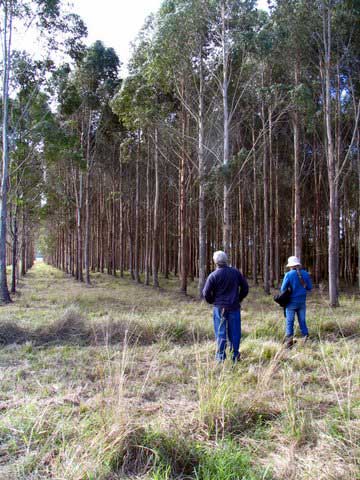June 2010 Field day
Over twenty people visited two properties in the lower Manning valley where the one owner has been developing extensive native planations for over thirty years. On the higher property the main species have been blackbutt and flooded gum, with most trees at an advanced stage. On the more low lying property, as well as flooded gum, swamp mahogany, tallowwood and blackwood have been planted. Frost damage has occcurred to the latter two species, although the tallowwood especially are recovering. The flooded gum have performed differently on different sites, with varying drainage conditions a likely important factor. Preparations for planting involved ripping and forming linear mounds in which to plant tube stock. A planting rate of up to 1000 trees per day has been achieved by the farmer working alone. Maintenance activities have included pruning, slashing between the rows, brushcutting between trees in a row and controlled grazing.
